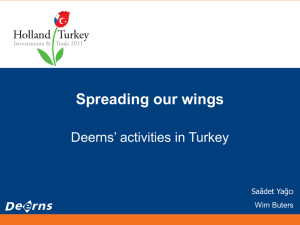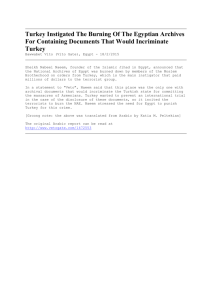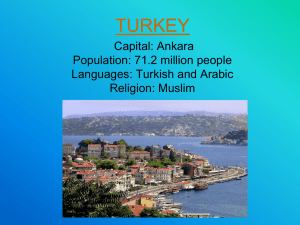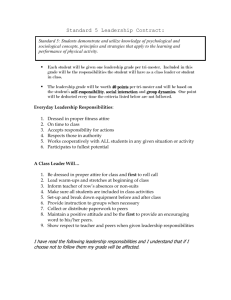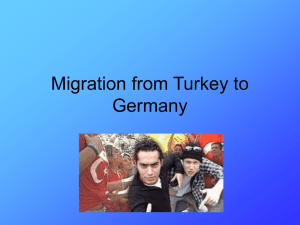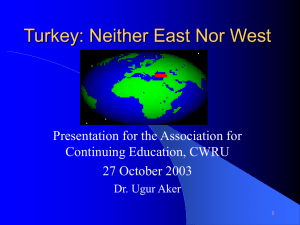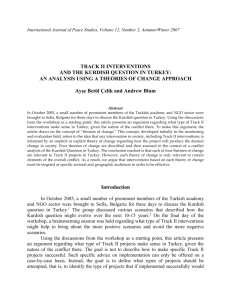2014 ur day abstract prep guide
advertisement
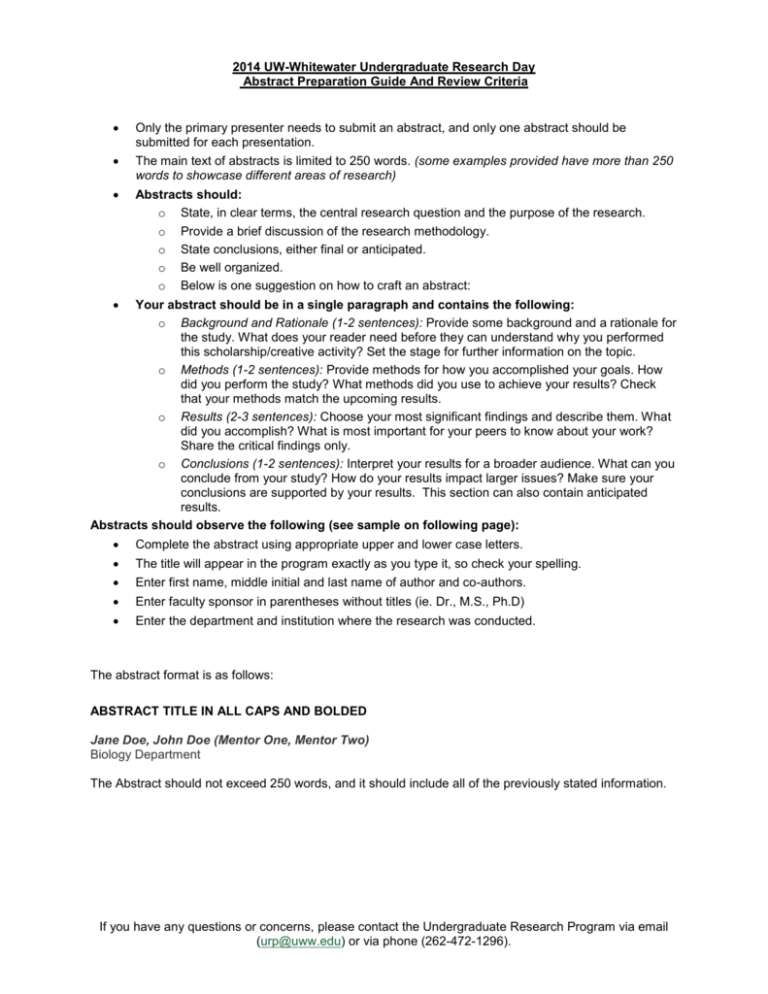
2014 UW-Whitewater Undergraduate Research Day Abstract Preparation Guide And Review Criteria Only the primary presenter needs to submit an abstract, and only one abstract should be submitted for each presentation. The main text of abstracts is limited to 250 words. (some examples provided have more than 250 words to showcase different areas of research) Abstracts should: o State, in clear terms, the central research question and the purpose of the research. o Provide a brief discussion of the research methodology. o State conclusions, either final or anticipated. o Be well organized. o Below is one suggestion on how to craft an abstract: Your abstract should be in a single paragraph and contains the following: o Background and Rationale (1-2 sentences): Provide some background and a rationale for the study. What does your reader need before they can understand why you performed this scholarship/creative activity? Set the stage for further information on the topic. o Methods (1-2 sentences): Provide methods for how you accomplished your goals. How did you perform the study? What methods did you use to achieve your results? Check that your methods match the upcoming results. o Results (2-3 sentences): Choose your most significant findings and describe them. What did you accomplish? What is most important for your peers to know about your work? Share the critical findings only. o Conclusions (1-2 sentences): Interpret your results for a broader audience. What can you conclude from your study? How do your results impact larger issues? Make sure your conclusions are supported by your results. This section can also contain anticipated results. Abstracts should observe the following (see sample on following page): Complete the abstract using appropriate upper and lower case letters. The title will appear in the program exactly as you type it, so check your spelling. Enter first name, middle initial and last name of author and co-authors. Enter faculty sponsor in parentheses without titles (ie. Dr., M.S., Ph.D) Enter the department and institution where the research was conducted. The abstract format is as follows: ABSTRACT TITLE IN ALL CAPS AND BOLDED Jane Doe, John Doe (Mentor One, Mentor Two) Biology Department The Abstract should not exceed 250 words, and it should include all of the previously stated information. If you have any questions or concerns, please contact the Undergraduate Research Program via email (urp@uww.edu) or via phone (262-472-1296). Abstract Title: OF SQUIRRELS AND MEN: A STORY OF PLATELET STORAGE Name of Author(s) (Mentor(s)) Department: Bailee Sliker (Scott Cooper) Biology Department Abstract: Platelets are routinely used in transfusions, yet they cannot be stored in a refrigerator or else they will be cleared rapidly when re-injected into a patient. The objective of this experiment is to see if platelets from ground squirrels are resistant to cold storage, and thus could serve as a model to develop methods to store human platelets in the cold. To test this we will fluorescently label platelets from humans and ground squirrels, store them at 4°C and 37°C for up to 48 hours, and measure their uptake by cultured human liver cells. Previous research has shown that human platelets stored at 4°C are rapidly taken up, and we predict that ground squirrel platelets stored at 4°C will be resistant to this cold storage. Abstract Title: SUITS ME – A MARKET FEASIBILITY ANALYSIS FOR CREATING A BUSINESS APPAREL STORE Name of Author(s) (Mentor(s)) Department: Angela J. Reynolds (Susan M. Jensen) Business Management Abstract: This study was conducted to analyze if a store selling professional business attire would be successful in Kearney, Nebraska. Primary market research was conducted (via a survey, with N= 412), identifying products and services desired by the target market of college students and young professionals. Based on the needs identified, Suits Me was created to provide the selection desired, exceptional customer service, and educate people about current professional business attire trends in the United States. This primary research data was supplemented by secondary market research to identify current market trends, industry characteristics, and employer expectations. Further, the secondary data was used to identify and analyze differences noted between national trends and the data gathered from the target market in Kearney. This feasibility study explores the product and service needs of the Kearney market region while analyzing the current national business trends, how the target market relates to national trends, what employers look for when hiring employees, expectations of those attending job fairs, and what prior research has demonstrated to be the most effective attire to wear to professional business activities such as interviews. Overall, the research indicated potential for the Kearney market to support a professional business attire store. Results suggest market need does exist for a retail store in central Nebraska that offers significant product selection, personalized customer service, and educates customers about current trends. Abstract Title: THE KURDISH HUMAN RIGHTS MOVEMENT: TURKEY AND THE EUROPEAN UNION Name of Author(s) (Mentor(s)) Department: Jasmine Nears (Beth Dougherty) International Relations Abstract: Since the foundation of the Republic of Turkey to the Turkey’s candidacy within the European Union, Turkey did not formally recognize any Muslim minority and subsequently viewed any non-Turkish nationalist expressions as a security threat against Turkey’s border integrity. The Kurds, who are Turkey’s largest unrecognized minority, strongly reacted against the denial of their identity through a variety of venues. The most influential reaction was that of the Kurdish Worker’s Party (PKK). The Kurdish Worker’s Party waged a fifteen year civil war with Turkey for an independent Kurdistan and later switched to the platform of autonomy within Turkey and demanded recognition of their cultural and linguistic minority rights. The ensuring civil war resulted in a series of repressive laws against Kurdish cultural and linguistic expression and a multitude of human rights grievances. The rapid pace of human rights reforms in Turkey from 1999 to 2005 illustrates the direct leverage international organizations have in constructing state’s domestic and international policies. Turkey’s desire to join the European Union coupled with the required reforms outlined by the Copenhagen Criteria directly influenced the human rights situations of Kurds in Turkey. Although the reforms were unprecedented and supported by legal change they were also limited in scope and implementation. The case of the Kurdish Human Rights movement in Turkey also demonstrates the possible limitations of international organizations. Without proper domestic incentives to implement human rights reform, the resulting reforms are often limited in scope and take a long time to implement without a social reconstruction that accepts the reforms. Abstract Title: BRIDGING BORDERS THROUGH BOOKS Name of Author(s) (Mentor(s)) Department: Rachel L. Probst, Joelle Fierro (Genan Anderson) Education Abstract: Prejudice or negative feelings toward primary grade peers of different cultures may arise from limited interaction between students outside of a structured arena. We addressed the question: Would mentoring students to share and read their own stories in the language of another peer, change their attitudes toward their classmates? A sample of 45 students: 20 first- and 25-third graders, ages 6-9 years-old, 23 boys and 22 girls, 10 Hispanic and 35 Caucasian were monitored in cooperative learning groups, recess, and at lunch, to determine the level of interaction between students, particularly between students of different ethnicities. A compatibility survey was administered to students to rate their interactions and friendships with peers. Students were pre-assessed on their ability to write a story and identify beginning, middle, and end. Students dictated personal stories using a tape recording device in their first language. Assistance was available for story transcriptions. All stories were printed in the child’s the child’s first language and the second language of the population complete with the students’ own illustrations. Students were given their own copy of their published story and a compilation of all of the stories was published as a classroom book made available for check out to take home and be shared with their families. Time sampling to assess the level of interaction between students was repeated as was the compatibility survey. Results showed following treatment, the amount of time students chose to interact with peers across cultures increased as did the frequency of peers choosing friends across cultures.
